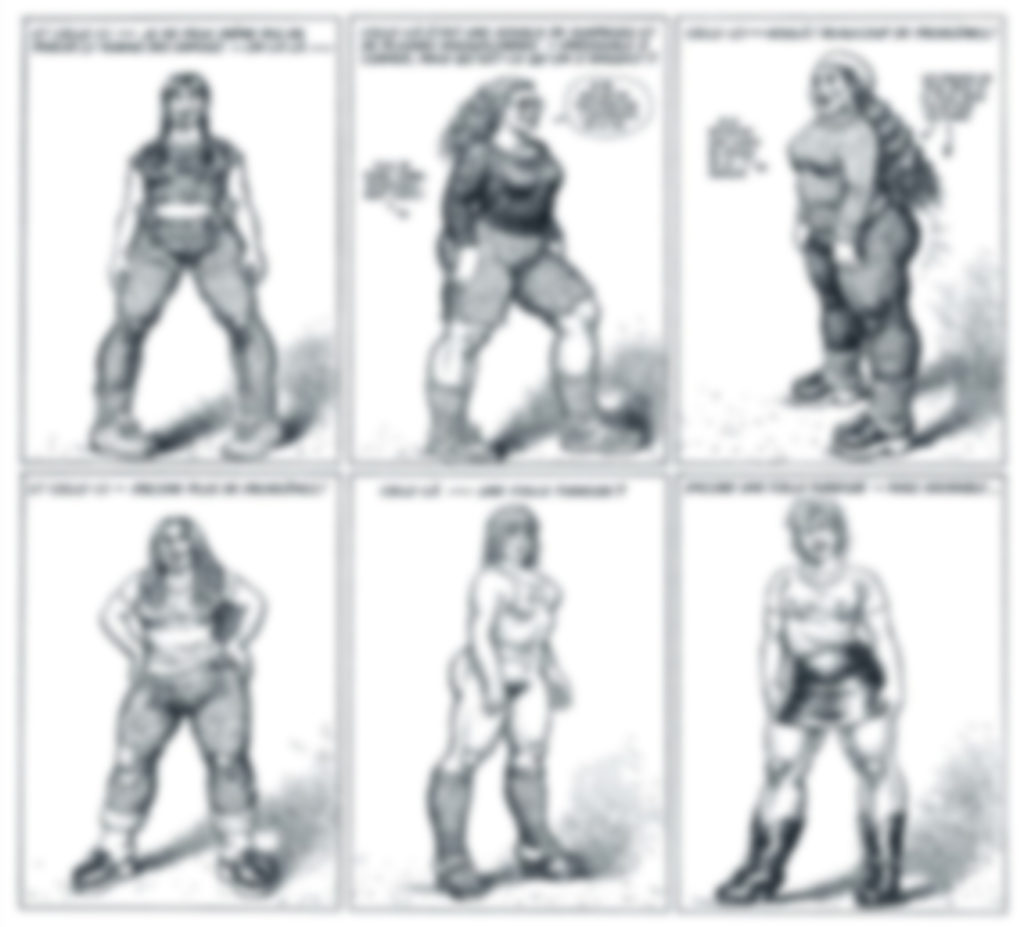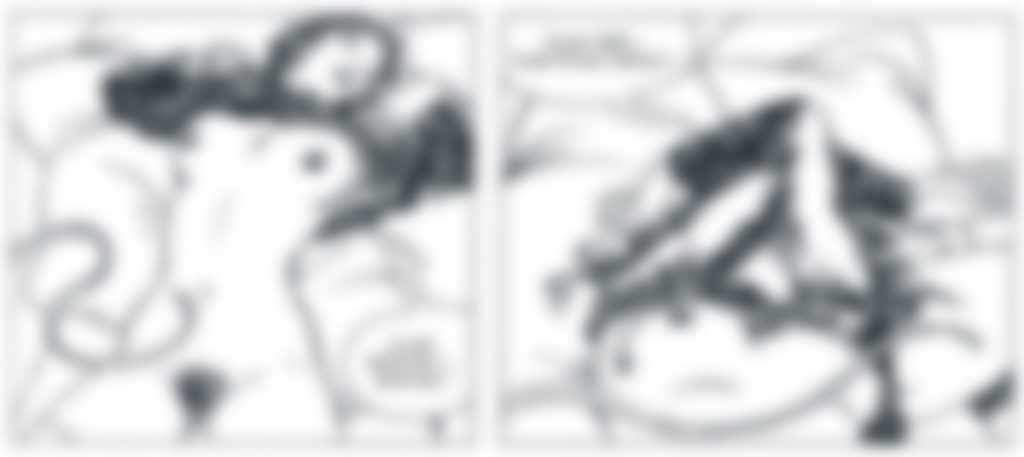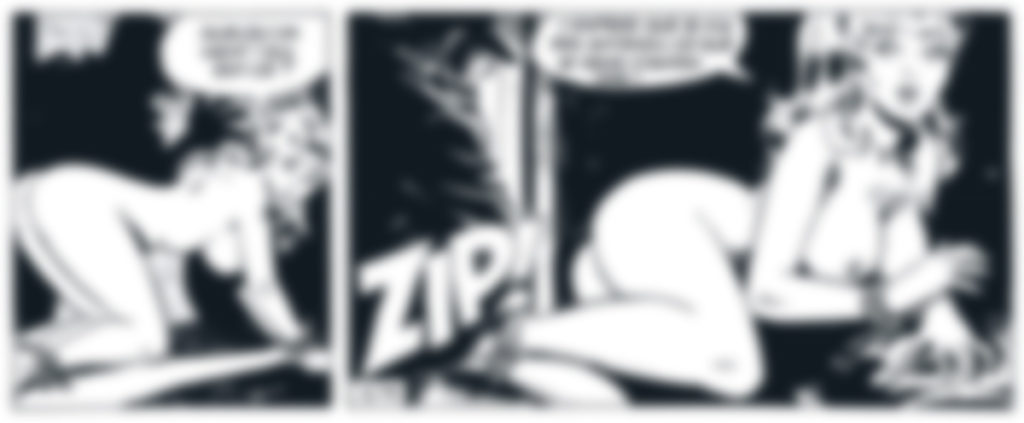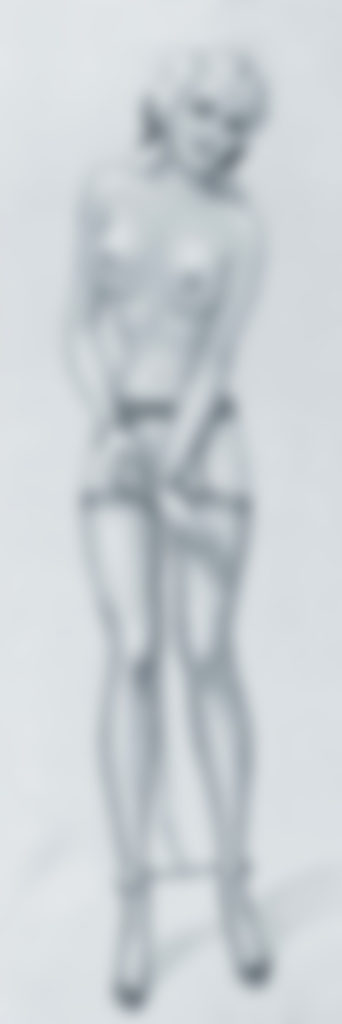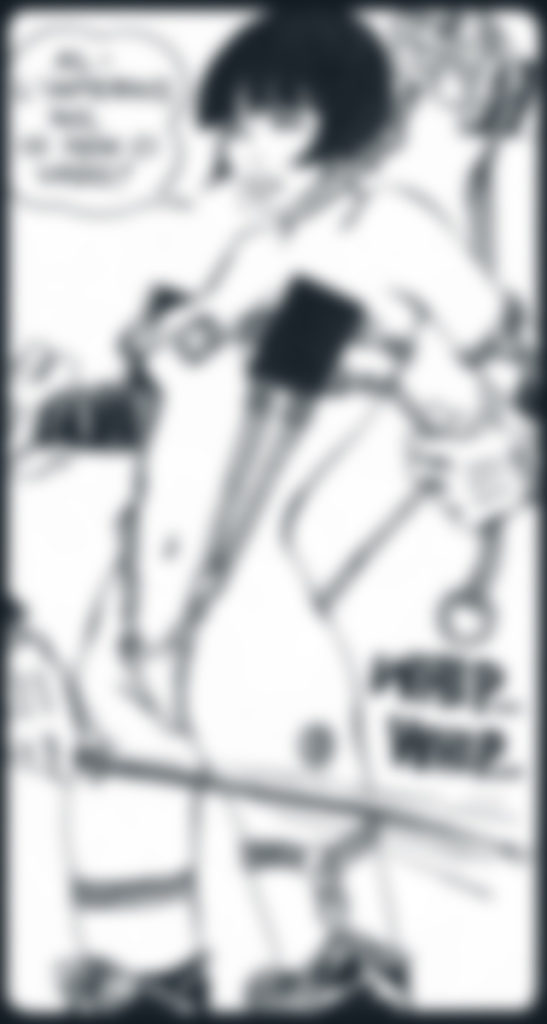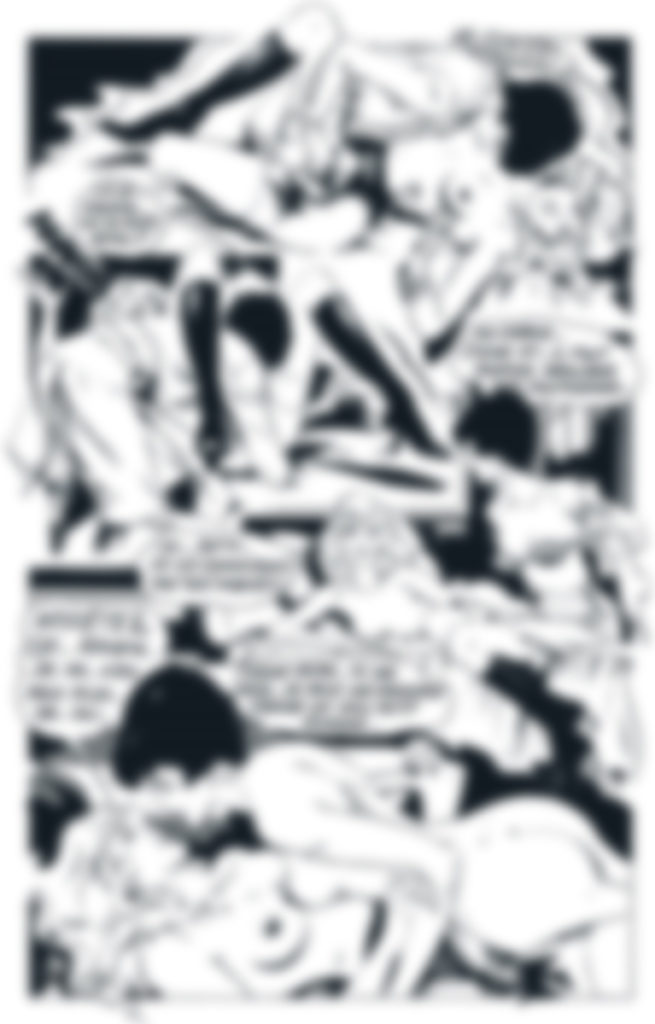The content of this article is meant for adult readers only due to the presence of nudity and explicit language.
Comic book creators are often obsessed with sex (to be fair, the same could be said for their readers). And they are pretty mean, too. They drag their poor heroines into some sticky situations. Claudia Christiani is taunted by a perverted lover who pushes her to the very limits at the touch of a little button. Sweet Gwendoline keeps finding herself tied up and restrained. Luckless (or perhaps just not very bright) Sally Forth spends her time butt-naked, unable to gather her thoughts, the few she might have. But erotic comic books aren’t all about sex. They also serve as social satire, futuristic storytelling, or even philosophical tales. It’s just those raunchy girls, Liz and Beth, who insist on getting up to no good. For shame!
CRUMB’S WOMEN
Robert Crumb (script and artwork), My Troubles With Women (1980), Last Gasp
Obsessions
Robert Crumb is said to be a pervert (that’s why some readers love him). He’s crazy about women with big butts and large calves and he likes to see them in the craziest situations.
“All I do is think about sex and collecting old records,” he confides in Uncle Bob’s Mid-Life Crisis. One of his books is aptly titled, My Troubles With Women. Puberty was hell for Crumb, a high school misfit, more interested in the arts than getting into fights and playing sports. And while he got on well with girls, sharing the same tastes and sensitivity, they chose the alpha males over him every time.
“Why do the most sensitive girls go for the most aggressive and violent guys?” teenage Robert wondered while drawing sketches that all the girls loved. They should have been more attracted to him, but instead preferred the hyper-confident, macho males. Life sucked. “God’s got it wrong. He can’t exist,” Robert thought, “because he wouldn’t have made my life turn out like this.”
Guilt
Robert sought refuge in drawing and his vivid imagination. At night he would fantasize about Sheena the jungle queen and then he would draw the pulpy creatures he dreamed of to feed his frantic masturbation. Alas, the pleasure from these fantasies was quickly spoiled by feelings of guilt; in My Troubles With Women, he reveals the sense of deviance that burdened him over his activities. And yet, Robert Crumb owes his success to these very drawings. They made him a star of underground comics. All of a sudden, women started noticing him, and (who can blame him?) he didn’t waste a second. Feminists accused him of misogyny, while other women felt he empowered them through his stories. All in all, Robert Crumb ended up being a controversial figure…
Love
Crumb is also a man in love with his wife, artist Aline Kominsky. They have been drawing themselves for the past forty years in Dirty Laundry Comics and Self-Loathing Comics, an autobiographical telling of their married life, with a passion that only intensified over the years. The cover warns about explicit content, even though there’s not much of that going on… And, ultimately, what else could we have expected from Crumb?
CLAUDIA CHRISTIANI
Milo Manara (script and artwork), Click! (1983), Playmen Magazine / Dark Horse
Sex Drive
Beautiful Claudia Christiani is a member of Italian high society. She’s married to an older man, a wealthy lawyer. When it comes to her own sexuality, she can only be described as frigid and reserved, so much so that she’s insulted when Dr. Fez, an acquaintance of her husband, compliments her on her “voluptuous curves.” In fact, she is repulsed by him, and their relationship develops in the vein of the impossible love story between Quasimodo and Esmeralda. Fez learns of a sure-fire cure for impotence created by one of his ex-colleagues—a remote-controlled brain implant—and a plan begins to brew: if he can get the invention into Claudia Christiani, he can succeed in unleashing her libido. The results go beyond his expectations, and soon Claudia can’t even leave her house without losing complete control of her sexual urges for all to see…
Purity
Click!—a bestseller that was also adapted for the big screen—is “a short tale aiming for laughs over titillation,” says Manara in his introduction to the new edition. “I just wanted to tell the story of a ‘sex-phobic’ and judgmental woman who, under the influence of a pervy little device, could turn into a rampaging nymphomaniac. I was trying to jokingly make the point that anyone can allow themselves to get carried away and indulge in deeds that, just before, seemed crazy or disgusting.” And speaking of getting carried away, regrettably, so did Manara; driven by his success or perhaps pressured by his publisher, he went on to write a sequel that was by no means necessary. The naughty little satire that was the original had been quite enough on its own. Beyond its raw eroticism and its humor, the story (better read in the original black and white version) prompts readers to reflect on their own impulses: Claudia Christiani exposes the men whose outward respectability shatters upon contact. Fascinated in her youth by the legend of Lohengrin’s swan, Claudia has aspirations of “ridding the world of chaos and filth.” Despite her sexual escapades, she appears to be in search of purity, as a character points out to her at the end of the second book: “You have nothing to atone for. You can join your Lohengrin by holding yourself back, but also by letting yourself go completely… Because when you reach your peak, you yourself become an immaculate swan…” We wonder, is the device a scam, or does it actually work? It’s up to the reader to decide…
SALLY FORTH
Wallace Wood (script and artwork), Sally Forth (1968), Fantagraphics
A Bimbo With a Heart of Gold
Boobs, boobs, boobs. Skimming a page of Sally Forth, it’s impossible not to notice the heroine’s generous cleavage on display. Fans of ample chests hit the jackpot with Sally Forth, and Sally herself is basically the dream girl-next-door. With help from a little Martian called Snorky and a baby who’s wise beyond his years, she carries out different missions for the US military. Letting her go it alone would indeed be risky: she’s not the sharpest tool in the shed. She can’t understand simple orders, hearing “go down!” when told “get down!”, which prompts her to protest: “I’m not that kind of girl!” Because make no mistake, Sally’s a good girl! Even when her clothes hit the floor in less time than it takes the reader to get to the bottom of the page. It’s not that she’s an exhibitionist, she just wants to get comfortable. Her refreshing lack of inhibition and ease in her own body are evident in her wide, guileless (read: bewildered) gaze.
Wacky Adventures
Sally Forth goes on wacky adventures in space, understanding little of what’s going on, much like her puzzled take on women’s rights, a cause taken up by her sister Libby, a beautiful busty brunette who tries her best to instill feminist sensibilities in her sibling. Drawn by Wallace Wood, a collaborator of Harvey Kurtzman back in the heyday of Mad magazine, Sally is the latest in line of the many comic book women who walked around in various degrees of undress. She’s actually a distant cousin of the very first of these women: a British character called Jane, who was created in 1932. Called to action during World War II to boost the morale of British troops, Jane inspired several female characters published in military magazines, such as Milton Caniff’s Male Call. Sally Forth herself appeared in an army magazine, and her name is a form of wordplay, meaning “rushing forward with enthusiasm.” Something she never fails to do, compensating for her naivety (some would say, “her stupidity”) with contagious joie de vivre; and typically wrapping up an adventure with a bumbling of a catchphrase: “As I always say, all’s well that begins well.”
SWEET GWENDOLINE
John Willie (script and artwork), The Adventures of Sweet Gwendoline (1946), Wink Magazine / Belier Press
Bondage
Literally, and metaphorically, John Willie’s the kind of author who will have you hooked. He’s devoted his entire career—as designer, photographer, and editor of Bizarre magazine—to depicting women tied up in the most outrageous and unexpected positions. Willie, real name John Alexander Scott Coutts, was a master of bondage, a discipline (in every sense of the word) all about restraining one’s intimate partner using an array of fetish gear, including ropes, chains, corsets, and latex suits. The print character who became iconic as his victim was the hapless Sweet Gwendoline.
Vice and Virtue
A heavenly blonde with legs that go on and on, a wide-eyed ingenue with hair wisely tied back and out of the way, tottering on sky-high heels and more often than not appearing naked as the day she was born—and not the least bit bothered by the fact—“Gwen” seems to constantly find herself in situations that are, to say the least, awkward and humiliating. And yet, she remains a good sport, losing neither her patience nor her sense of humor. “Sorry, but I’m afraid I can’t shake your hand!” she says with all the ease in the world to the aunt of her friend U69, while her hands are tied behind her back and she’s got a rope around her neck… In The Missing Princess, Gwendoline is brought to heel, gagged, corseted, and tormented throughout, but she’s also venerated by John Willie’s sumptuous wash drawing style. She doesn’t fare much better in The Race for the Gold Cup. She spends most of the story trying to escape the devious schemes hatched by the notorious Sir Dystic d’Arcy (based on Willie himself), who keeps trying to tie her up and lock her away—that is, until U69 comes to the rescue. But Sweet Gwendoline is not just for bondage fans: The Missing Princess—an ode to aesthetics and tasteful eroticism—aside, the stories featuring this damsel in distress are actually little gems, full of humor and over-the-top adventures. “Gwendoline is respectable, it’s a perfectly decent comic book,” says her creator. “Will vice conquer virtue? That would be wicked!” he adds in The Race for the Gold Cup. Wicked indeed, but no doubt delightful too…
VALENTINA ROSSELLI
Guido Crepax (script and artwork), Valentina (1965), Milano Libri / Fantagraphics
A Turbulent Life
With her severe bob and bangs, Valentina Rosselli looks a lot like Louise Brooks, the American silent movie star famous in the 1920s and ’30s. She is Italian, lives in Milan, and works as a fashion photographer. She first appeared as a supporting character to Neutron—a vigilante superhero who can stun with a mere look and has all the latest high-tech gadgetry—but quickly took center stage as a protagonist; she later transcended that role as well, to become an icon of sorts, embodying in print the new wave of freedom and eroticism that fueled the comic book scene in the 1960s. The ups and downs of Valentina’s life emerge outside the fashion studios, where she wryly directs her models (“Go on, silly girl, look naughtier! Not like that, you look like a cartoon!”). Beyond her day job, her life is also filled with fantasy sequences, moving seamlessly between reality and the world of dreams—sometimes nightmares—inviting the reader to wander along with her as she meanders through her dreamlike journey.
Caressing or Flogging?
In her fantastical inner journeys, Valentina often finds herself tied up, gagged, and forced to submit to the erotic whims and dominant fantasies of others; nevertheless, she maintains her grace and natural elegance thanks to the drawing style of Crepax, who was described by critic Pierre Sterckx, on the French-language comics website Actua BD, as an artist who “swings between caressing and flogging.” Valentina was introduced in Linus, an Italian comics magazine. In France, she made her first appearance in Hara-Kiri, in 1968, was then published in a volume by Eric Losfeld, and eventually found a home in Charlie Mensuel magazine. Valentina is unique in that she matured in step with the era and personal development of her creator—a man that Pierre Sterckx claimed “extoled the virtues of masochism, a practice that distinguishes desire from pleasure, and bridges the two using pain.” Through Valentina, Guido Crepax explored the connection between jazz and the comic book arts, and created a deliberately highbrow and radically innovative comic. The pages were at times fragmented to accommodate multiple points of view or to extend the storytelling, and at others, were reduced to a single frame in which the characters swirled around and got carried away, much like the readers themselves, by Valentina’s vivid imagination.
LIZ & BETH
G. Lévis (script and artwork), Liz & Beth (1975), Éditions Delcourt
Loose Women
The comic is set in the bygone and carefree era of the 1970s, when sex started to become a topic of conversation and make its way onto movie screens. Liz (the blonde one) and Beth (the brunette) are fully on board with this great upheaval of social mores, and take part in it using the full extent of their physicality and imagination. A doctor’s wife and well-versed in extramarital affairs, as free in her life as in her preferences (“I tend to do what I want”), Beth seems the outward leader and instigator of the affair. But Liz, who manages a women’s clothing store, is ever so eager to be the student who becomes the master, or in this case, the mistress. This climate of freedom and exploration allows Liz and Beth, both of them open-minded and curious by nature, to gain a multitude of experiences. They sport sexy lingerie, easily switch between male and female partners, and turn to each other when there’s no one else at hand. As a matter of course, they enjoy multiple partners, initiate younger lovers to the pleasures of the flesh (which make us wonder whether this sort of behavior would pass muster in today’s comics), and heartily engage in light sessions of S&M and spanking. Liz and Beth, who seem to come from well-to-do families, are no cold, haughty gold-diggers. In fact, they couldn’t care less what a man does for a living: gardener, pilot, mechanic, or farmer—the potential lover is welcomed with open arms, as long as his stamina matches his willingness to have a good time.
Sidobre, The Punster
Liz and Beth proved to have a lasting appeal, and not just because of the highly erotic content of their adventures or the delightfully retro charm of the era in which their stories are set (dissembling readers might pretend they are simply fans of the 1970s, but we all know otherwise). The enduring success of Liz and Beth can instead be mostly attributed to the elegant drawing style of their creator, Jean Sidobre; a prolific artist who, ironically, first found success by illustrating The Famous Five, by English children’s writer Enid Blyton. Sidobre often revealed his wry sense of humor, not only through his writing in Liz & Beth (“Truth is stranger than friction friction or fiction? ”), but also in how he chose to have his name appear in print. After changing his name to G. Lévis, he added on the name of an imaginary scriptwriter, who could only have been himself, calling him “de Monage,” a play on the French de mon âge(“of my age”).
DRUUNA
Paolo Eleuteri Serpieri (script and artwork), Druuna (1985), Alessandro Editore / Heavy Metal Magazine
Backside
Druuna often turns her back to the reader, but it’s not that she’s being rude. Rather, it’s that her creator, Paolo Eleuteri Serpieri, loves drawing female posteriors, and includes them on the page every chance he gets. Druuna is more than just an erotic comic book though, despite its many “explicit” passages (and that’s putting it mildly: as the story unfolds, the sex scenes become more and more raw and brutal). This series of eight volumes is first and foremost a touching and complex cautionary tale, a study of the future we face, tackling themes already familiar to sci-fi fans. We can also pick out influences from cult movies such as Alien —humans undergoing genetic mutation—and Blade Runner, with its replicants.
Religion
In a post-apocalyptic future, a nightmarish vision of mankind’s fate, Druuna is left to the tender mercies of a computer. She’s an aberration, a jarring holdover from days gone by. Her exquisitely full figure and sensual curves make her stand out even more among the disfigured mutants or sapped bodies that make up the pitiful remains of the surviving human population. Druuna is nothing short of a small miracle, the last bit of health and vitality in a world dominated by filth, violence, and overall decay. On top of that, she’s unapologetic about liking sex. “I seek pleasure, it makes it all worthwhile… What’s it to you?” she says in Aphrodisia, the sixth volume in the series. She’s passed around among perverts, assaulted by creatures each more repulsive than the next, and torn between her search for pleasure and fear of (or perhaps attraction to?) pain. But she also uses sex to save her lover, Shastar, who has already suffered a genetic mutation. She’s ready to do whatever it takes to find the serum that will save him. It’s funny to think that, shortly before Druuna, Serpieri illustrated an educational comic called Discovering the Bible. That said, a strain of religiosity runs through the character of Druuna, a woman in search of her own identity, forever trying to strike a balance between purity and sin, between death and sexuality, between dreams and the real world, between the present, the future, and the past, and finally, between savagery and humanity itself.
The Heroines of Comics: Erotica is the last of a four part article series The Heroines of Comics written by Christophe Quillien and published in France as Elles : Grandes aventurières et femmes fatales et de la bande dessinée, Huginn & Muninn, 2014
Part 1: The Heroines of Comics: Europe
Part 2: The Heroines of Comics: USA
Part 3: The Heroines of Comics: Japan
Header image: [Claudia Cristiani] © MILO MANARA, Click! (1983)
